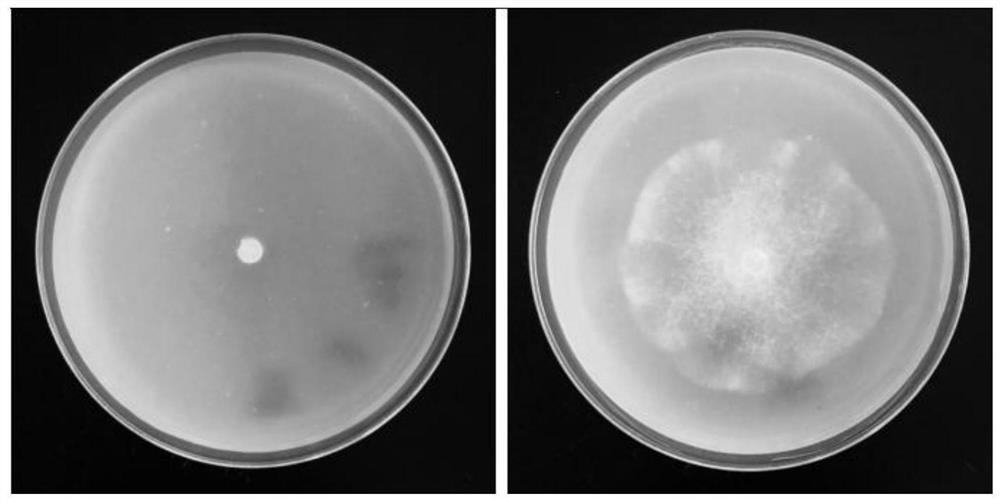Application of Linalool in Controlling Plant Soilborne Diseases
A soil-borne disease, linalool technology, applied in the field of pesticides, can solve problems such as unstable control effect, pesticide residues, environmental pollution, etc., and achieve good control effects, no pesticide residues, and environment-friendly effects.
- Summary
- Abstract
- Description
- Claims
- Application Information
AI Technical Summary
Problems solved by technology
Method used
Image
Examples
preparation example Construction
[0019] The present invention also provides a preparation method of linalool microcapsules for preventing and treating plant soil-borne diseases, comprising the following steps: mixing linalool, β-cyclodextrin and water in a mass ratio of 1:8:8 Stir for 40 minutes, vacuum dry, grind, and collect the part with a particle size less than 200 μm to obtain the linalool microcapsules.
[0020] The temperature of the vacuum drying in the present invention is preferably 70° C., and the time is preferably 12 hours. The linalool microcapsules of the invention use linalool as an active ingredient and β-cyclodextrin as an embedding agent.
[0021] The invention also provides the linalool microcapsules for preventing and controlling plant soil-borne diseases prepared by the above preparation method.
[0022] The mass percent content of linalool in the linalool microcapsules of the present invention is preferably 80±5%.
[0023] The invention provides the linalool microcapsules for prevent...
Embodiment 1
[0028] Preparation of Linalool Microcapsules
[0029] (1) Mix linalool, β-cyclodextrin and water in a mass ratio of 1:8:8, and fully stir for 40 minutes;
[0030] (2) Dry the above sample in a vacuum oven at 70°C for 12 hours;
[0031] (3) Gently grind and sieve the dried product to obtain a fraction smaller than 200 μm to prepare microcapsules with a linalool content of 80±5%.
Embodiment 2
[0033] Inhibitory Effect of Linalool on Tobacco Blackleg
[0034] 1. Measurement method
[0035] 1.1 Linalool plate antibacterial test
[0036] Mycelium growth rate method. Use DMSO (0.5%, v / v) to make linalool into different concentrations of oat medium plates (abbreviated as OA, boil 30g oatmeal with 1000ml water for 20min, filter with 4 layers of gauze, add 17g agar, and sterilize at 121°C for 20min ), the final concentration of linalool was 5, 10, 20, 40, 80, 120 μl / L. Inoculate Phytophthora nicotiana cake (5mm) on OA medium containing different concentrations of chrysanthemum essential oil, culture at 28°C for 5 days, and use the same dilution ratio of DMSO as a control, measure the colony diameter by cross method, and calculate the mycelial growth inhibition rate.
[0037] 1.2 Determination of fumigation effect
[0038] The fumigation activity of linalool against Phytophthora nicotiana was determined by the sealed plate buckle method. Phytophthora nicotiana cakes wi...
PUM
 Login to View More
Login to View More Abstract
Description
Claims
Application Information
 Login to View More
Login to View More - R&D
- Intellectual Property
- Life Sciences
- Materials
- Tech Scout
- Unparalleled Data Quality
- Higher Quality Content
- 60% Fewer Hallucinations
Browse by: Latest US Patents, China's latest patents, Technical Efficacy Thesaurus, Application Domain, Technology Topic, Popular Technical Reports.
© 2025 PatSnap. All rights reserved.Legal|Privacy policy|Modern Slavery Act Transparency Statement|Sitemap|About US| Contact US: help@patsnap.com



